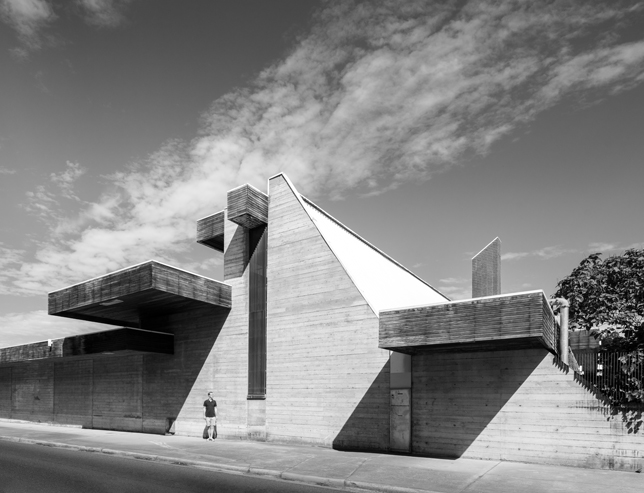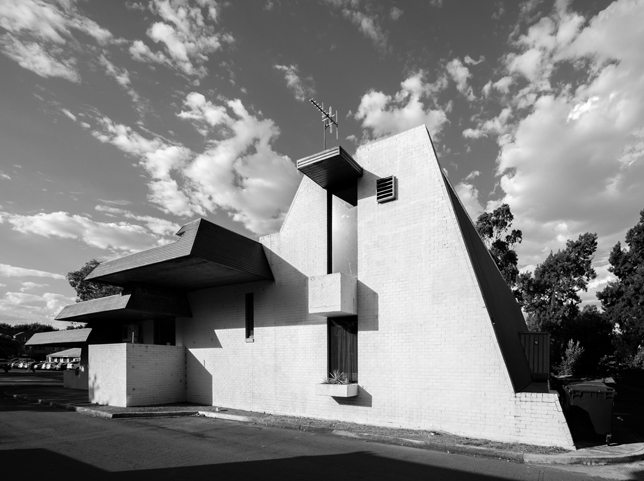

I discovered Enrico Taglietti’s work when I first visited Canberra nearly ten years ago. It was a revelation. His designs were evocative of Frank Lloyd Wright’s work, to be sure, but were also unique. These buildings had a sort of mysterious — almost mystical — quality to them that seemed to emerge organically from the Canberra landscape. They are like forgotten temples of some long-lost tribe, hinting at deeper meanings that we don’t quite understand.
When I photographed these buildings, I wanted to give them a sense of mystery, and also monumentality. There is a sculptural quality to Taglietti’s designs, and those geometric shapes, such as the triangles and deep, vertical cantilevers, are defining features. They are meant to change appearance, creating shadow forms on the walls that move and transform as the sun tracks across the sky. These are buildings with a sense of purpose, designed and built during a time when people were willing to invest in architecture and design in a way you don’t often see today.
People so often underestimate the effect of architecture on both emotion and perception. Spaces can have a profound influence on one’s mood, depending on how they are designed. Taglietti seemed to be acutely aware of this, and designed his buildings to intrigue, while giving pleasure to the eye. When you see one of his buildings, you want to go inside to see what you might find.
When I photograph architecture, Taglietti’s work included, my hope is that people may stop and notice them, and perhaps see them in a different way. It’s too easy to become blind to these treasures, seeing them every day as part of our routine. But they are special and unique to Canberra and the world, and deserve our consideration and attention.